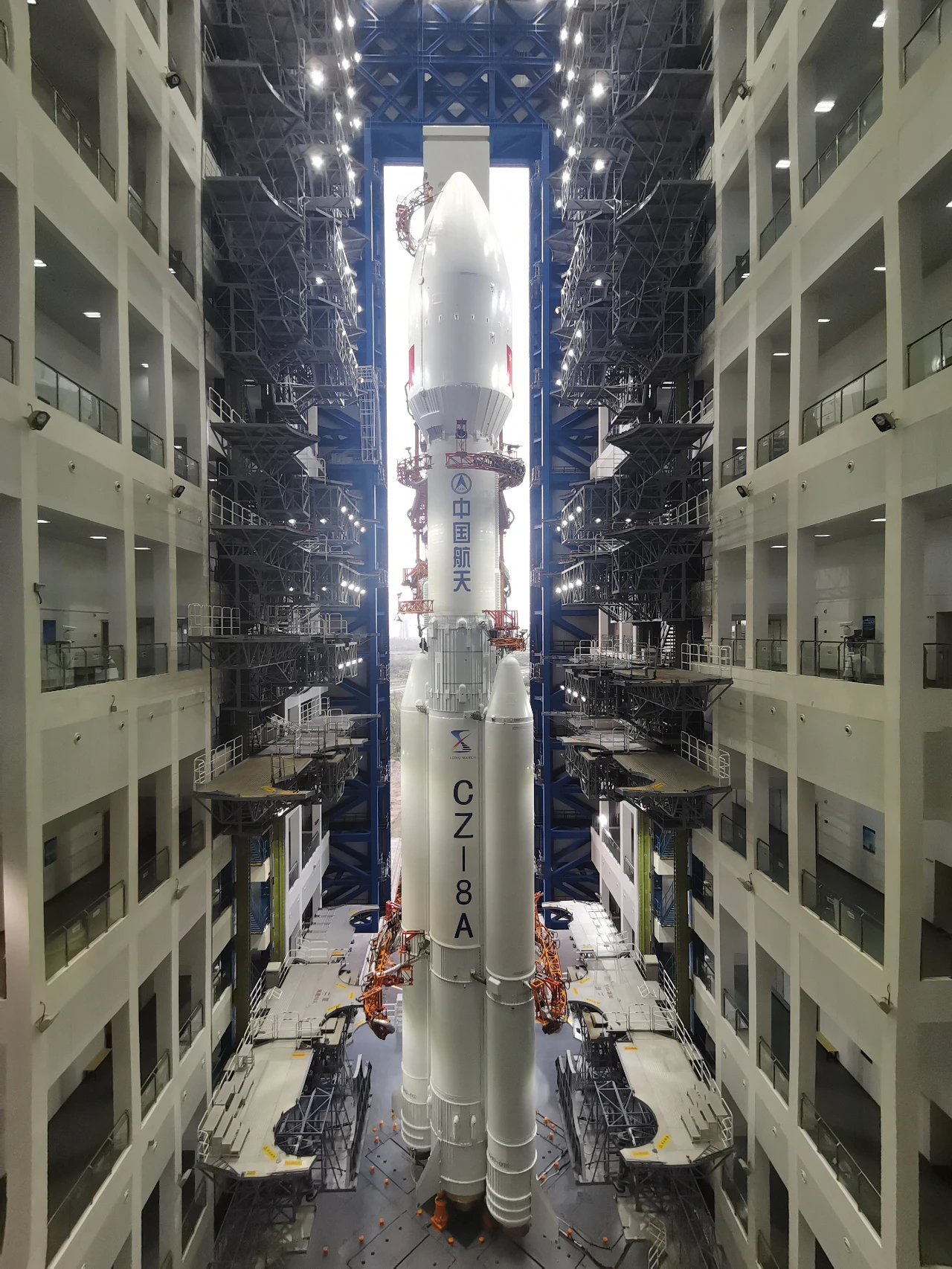
Long March 8A
ActiveChina Aerospace Science and Technology Corporation (CASC)
Feb. 11, 2025
Description
The Long March 8A is an orbital launch vehicle developed by the China Academy of Launch Vehicle Technology based on the Long March 8. It has an increased capability of up to 7 tonnes to a 700 km altitude sun-synchronous orbit. It implements a larger 3.35 meters diameter liquid hydrogen/liquid oxygen 2nd stage, coupled with 2 upgraded version of the YF-75D engines used on the Long March 5 (known as the YF-75H) with increased thrust to 10 tonnes each through measures such as increased turbopump speeds. The Long March 8A can also use a larger 5.2 meters diameter payload fairing.
Specifications
-
Stages
2 -
Length
50.5 m -
Diameter
3.35 m -
Fairing Diameter
5.2 m -
Launch Mass
371.0 T -
Thrust
4800.0 kN
Family
-
Name
Long March 8A -
Family
― -
Variant
8A -
Alias
― -
Full Name
Long March 8A
Payload Capacity
-
Launch Cost
― -
Low Earth Orbit
9800.0 kg -
Geostationary Transfer
Orbit
3500.0 kg -
Direct Geostationary
― -
Sun-Synchronous Capacity
7000.0 kg
China Aerospace Science and Technology Corporation
Government
Chairman & President: Lei Fanpei
CASC 1999The China Aerospace Science and Technology Corporation (CASC) is the main contractor for the Chinese space program. It is state-owned and has a number of subordinate entities which design, develop and manufacture a range of spacecraft, launch vehicles, strategic and tactical missile systems, and ground equipment. It was officially established in July 1999 as part of a Chinese government reform drive, having previously been one part of the former China Aerospace Corporation. Various incarnations of the program date back to 1956.
Upcoming Spaceflights
Long March 8A | Unknown Payload
China Aerospace Science and Technology Corporation | ChinaWenchang Space Launch Site, People's Republic of China
TBD December, 2025
Long March 8A | SatNet LEO Group 12
China Aerospace Science and Technology Corporation | ChinaWenchang Space Launch Site, People's Republic of China
Oct. 16, 2025, 1:33 a.m.
Long March 8A | SatNet LEO Group 10
China Aerospace Science and Technology Corporation | ChinaWenchang Space Launch Site, People's Republic of China
Aug. 25, 2025, 7:08 p.m.
Long March 8A | SatNet LEO Group 06
China Aerospace Science and Technology Corporation | ChinaWenchang Space Launch Site, People's Republic of China
July 30, 2025, 7:49 a.m.
Long March 8A | SatNet LEO Group 02 (Demo Flight)
China Aerospace Science and Technology Corporation | ChinaWenchang Space Launch Site, People's Republic of China
Feb. 11, 2025, 9:30 a.m.
Status: Launch Successful
Mission:
Demonstration flight of the Long March 8A rocket with upgraded first stage and boosters engines, and a new larger liquid hydrogen/liquid oxygen second stage with new YF-75H engines derived from ones used on the Long March 5. Payload is a batch of 9 Low Earth Orbit communication satellites for the Chinese state owned SatNet constellation operated by the China Satellite Network Group. The constellation will eventually consists of 13000 satellites.
Low Earth OrbitLong March 2
Shenzhou 22
Launch Area 4 (SLS-1 / 921) - Jiuquan Satellite Launch Center, People's Republic of ChinaShenzhou 22 (Chinese: 神舟二十二号) will be the 22nd flight of the Shenzhou program. The spacecraft will be launched without crew to replace Shenzhou 20 th…
Falcon 9
Starlink Group 11-30
Space Launch Complex 4E - Vandenberg SFB, CA, USAA batch of 28 satellites for the Starlink mega-constellation - SpaceX's project for space-based Internet communication system.
Falcon 9
Starlink Group 6-79
Space Launch Complex 40 - Cape Canaveral SFS, FL, USAA batch of 29 satellites for the Starlink mega-constellation - SpaceX's project for space-based Internet communication system.
Long March 3
TJSW-21
Launch Complex 2 (LC-2) - Xichang Satellite Launch Center, People's Republic of ChinaChinese classified satellite claimed to be for communication technology test purposes. Actual mission not known.
Falcon 9
Starlink Group 6-78
Launch Complex 39A - Kennedy Space Center, FL, USAA batch of 29 satellites for the Starlink mega-constellation - SpaceX's project for space-based Internet communication system.


